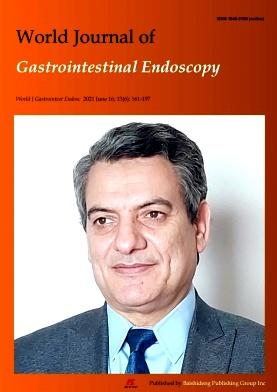Magnetic compression anastomosis for sigmoid stenosis treatment: A case report
IF 1.4
Q4 GASTROENTEROLOGY & HEPATOLOGY
引用次数: 0
Abstract
BACKGROUND Endoscopic balloon dilation is a minimally invasive treatment for colorectal stenosis. Magnetic compression anastomosis can be applied against gastrointestinal anastomosis. When combined with endoscopy, it offers a unique approach to the recanalization of colorectal stenosis. CASE SUMMARY We have reported here the case of a 53-year-old female patient who underwent a descending colostomy due to sigmoid obstruction. Postoperative fistula restoration was not possible in her due to sigmoid stenosis. Accordingly, endoscopic-assisted magnetic compression anastomosis for sigmoid stenosis was performed, and the sigmoid stenosis was recanalized 15 d after the surgery. Subsequently, a reduction colostomy was successfully performed after 10 d. CONCLUSION This case report proposes a novel minimally invasive treatment approach for colorectal stenosis.治疗乙状结肠狭窄的磁压吻合术:病例报告
背景 内窥镜球囊扩张术是治疗结肠直肠狭窄的一种微创疗法。磁压吻合术可用于胃肠吻合术。当与内窥镜检查相结合时,它为结肠直肠狭窄的再闭塞提供了一种独特的方法。病例摘要 我们在此报告了一名 53 岁女性患者的病例,她因乙状结肠阻塞而接受了降结肠造口术。由于乙状结肠狭窄,她无法在术后修复瘘管。因此,她接受了内窥镜辅助下的乙状结肠狭窄磁性压迫吻合术,术后 15 天,乙状结肠狭窄处重新通畅。结论 本病例报告提出了一种治疗结肠直肠狭窄的新型微创方法。
本文章由计算机程序翻译,如有差异,请以英文原文为准。
求助全文
约1分钟内获得全文
求助全文

 求助内容:
求助内容: 应助结果提醒方式:
应助结果提醒方式:


